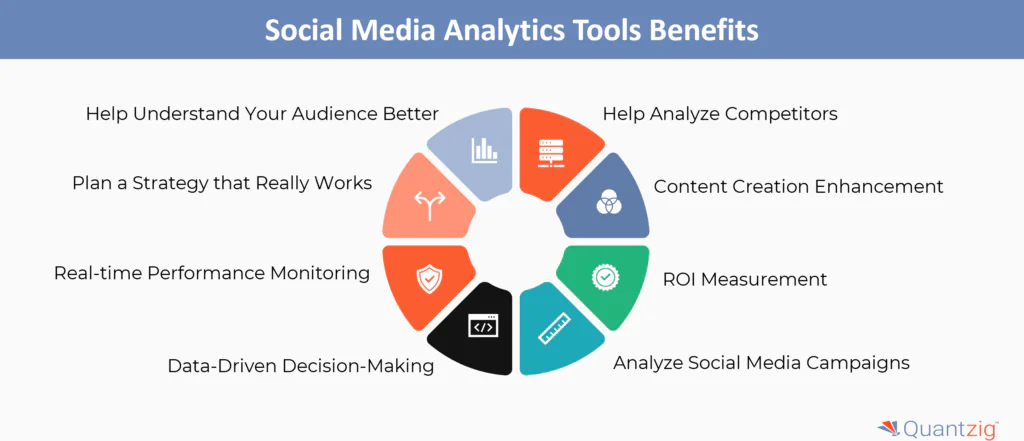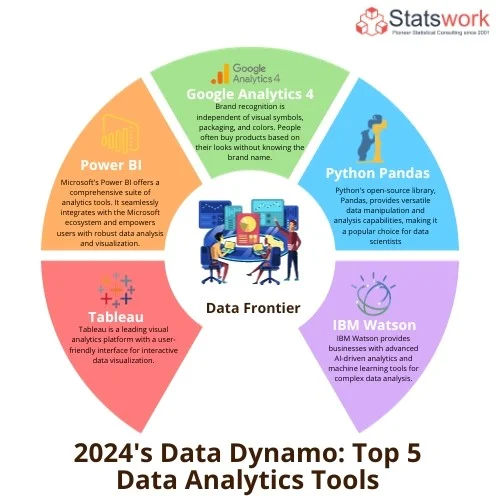Gain Competitive Edge Through Effective Analytics Deployment
Gain Competitive Edge Through Effective Analytics Deployment
Blog Article
Boost Efficiency and Productivity With Information Analytics
In today's data-driven landscape, organizations are increasingly recognizing the essential function of information analytics in improving operational effectiveness and profitability. By systematically examining information, companies can discover essential understandings that inform critical decisions, streamline procedures, and tailor client experiences (Analytics). Nevertheless, the challenge lies not just in the implementation of these analytical devices but additionally in comprehending exactly how to translate information into actionable outcomes. As we check out the subtleties of efficient data-driven strategies, the implications for both temporary gains and lasting success come to be increasingly clear. What might these insights expose for your company?
Comprehending Information Analytics
In today's data-driven landscape, recognizing data analytics is crucial for companies aiming to enhance functional effectiveness and drive earnings. Information analytics involves the organized computational analysis of data sets to reveal patterns, relationships, and insights that notify decision-making. By employing various techniques, such as analytical evaluation, maker knowing, and anticipating modeling, organizations can change raw information into actionable intelligence.
The procedure normally begins with data collection, where relevant info is collected from multiple sources, including transactional data sources, client communications, and market fads. This data is then cleaned and arranged to make certain accuracy and consistency. When the data is prepared, analytical devices and software are used to picture the info and discover, allowing stakeholders to determine abnormalities and patterns.
Eventually, understanding data analytics equips companies to make enlightened choices based on empirical proof instead than intuition. It helps with targeted techniques that can optimize source allotment, boost client complete satisfaction, and improve general performance. As companies progressively recognize the value of data-driven insights, a solid understanding of information analytics ends up being an essential competency for leaders and groups alike, positioning them for continual success in an affordable setting.

Secret Benefits for Services
Services that utilize information analytics can unlock a multitude of benefits that considerably boost their operations and earnings. Among the key advantages is enhanced decision-making. Information analytics supplies workable insights originated from real-time data, allowing organizations to make enlightened selections that straighten with market needs and customer preferences.

Additionally, data analytics cultivates boosted customer experiences. By understanding client actions and preferences, businesses can customize their offerings, bring about raised satisfaction and loyalty. This individualized strategy typically results in greater conversion prices and repeat business.
In addition, information analytics allows businesses to identify emerging trends and opportunities. By staying in advance of the contour, organizations can profit from brand-new markets and technologies before their rivals.
Applying Data-Driven Techniques
Successful execution of data-driven approaches calls for a detailed understanding of both business goals and readily available information resources. Organizations needs to first specify their objectives plainly, guaranteeing positioning in between data efforts and critical objectives. This clearness enables teams to concentrate on appropriate metrics and understandings that drive decision-making.
Following, organizations need to evaluate their existing information framework. This includes reviewing information high quality, accessibility, and assimilation capabilities. High-quality information is important for precise analysis, as bad data can bring about illinformed methods and lost sources. Organizations has to develop processes for data collection, cleansing, and administration to preserve data stability.
Moreover, cultivating a data-driven society is important. Staff members in all levels must be encouraged to take advantage of data in their everyday operations. Training programs and workshops can enhance information proficiency, empowering staff to make educated choices based on logical understandings.
Tools and Technologies Overview
A durable suite of tools and technologies is necessary for companies intending to harness the complete possibility of information analytics. These tools facilitate the collection, handling, and visualization of information, making it possible for organizations to obtain workable understandings.
At the foundational degree, information monitoring systems such as SQL databases and NoSQL systems give effective information storage and access capacities. For Source data handling and evaluation, programming languages like Python and R, together with frameworks such as Apache Flicker, allow complicated estimations and device discovering applications.
Visualization tools, including Tableau and Power BI, transform raw information into user-friendly graphical styles, making understandings available to stakeholders at all degrees. Furthermore, cloud-based platforms like Google Cloud and AWS offer scalable storage and handling services, suiting the growing volumes of data organizations encounter.
For sophisticated analytics, anticipating modeling and AI-driven remedies are increasingly taken on, allowing firms to forecast trends and enhance decision-making procedures. Integrating these tools into existing workflows is extremely important; organizations that efficiently take advantage of this technology can substantially improve functional effectiveness and drive productivity. Hence, buying the right devices and modern technologies is a calculated important for any kind of data-driven company.
Instance Research Studies of Success
Leveraging information analytics has led many organizations to accomplish impressive improvements in efficiency and productivity. One noteworthy instance is a large retail chain that implemented anticipating analytics to enhance inventory monitoring. By assessing historical sales data and customer patterns, the business decreased excess inventory by 30%, leading to significant cost financial savings and improved capital.
An additional example can be discovered in the production industry, where a leading automotive supplier used data analytics to improve its production procedures. By monitoring device performance in real-time, the organization determined traffic jams and inadequacies, resulting in a 20% rise in overall equipment performance (OEE) Related Site This not just increased production prices but likewise decreased downtime and maintenance prices.

These study highlight just how data analytics can drive tactical decision-making, enhance processes, and eventually improve both effectiveness and earnings across numerous fields.
Final Thought
In conclusion, the assimilation of data analytics into organization operations provides significant possibilities for boosting performance and success. By methodically examining information, companies can determine inefficiencies, enhance customer experiences, and make informed choices. The adoption of anticipating modeling and real-time surveillance further enables organizations to remain ahead of emerging fads and designate sources properly. Inevitably, the tactical implementation of data-driven methodologies fosters sustained affordable benefits and drives substantial enhancements in functional performance and financial outcomes.
In today's data-driven landscape, recognizing data analytics is crucial for organizations aiming to enhance functional performance and drive profitability. Information analytics involves the organized computational evaluation of information sets to discover patterns, correlations, and insights that educate decision-making. Data analytics gives workable insights obtained from real-time information, allowing services to make educated choices that line up with market demands and consumer preferences.
High-grade information is crucial for accurate analysis, as inadequate other data can lead to misguided methods and lost resources. Organizations must establish processes for data collection, cleansing, and monitoring to keep data honesty.
Report this page